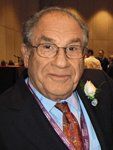- Acne
- Actinic Keratosis
- Aesthetics
- Alopecia
- Atopic Dermatitis
- Buy-and-Bill
- COVID-19
- Case-Based Roundtable
- Chronic Hand Eczema
- Chronic Spontaneous Urticaria
- Drug Watch
- Eczema
- General Dermatology
- Hidradenitis Suppurativa
- Melasma
- NP and PA
- Pediatric Dermatology
- Pigmentary Disorders
- Practice Management
- Precision Medicine and Biologics
- Prurigo Nodularis
- Psoriasis
- Psoriatic Arthritis
- Rare Disease
- Rosacea
- Skin Cancer
- Vitiligo
- Wound Care
Article
Studying fine art enhances clinical observational skills
Analyzing 18th and 19th century (Victorian-era) paintings can help dermatologists think beyond their established habits and preconceptions in the search for visual and other diagnostic clues, says Irwin Braverman, M.D., professor of dermatology, Yale School of Medicine.

Key Points

Dr. Braverman says that when he began his medical training, "Observation was the most important thing I was taught." He says the type of observation taught in medical schools focused only on details known to be associated with a particular condition.
"Relative to every medical disease or surgical problem, whatever cutaneous signs we knew about, those were the things medical students and trainees were supposed to learn so that they could identify them" in subsequent patients, he says. "We were never taught how to see. We were only taught to memorize and remember what was already known."
Dr. Braverman says his frustration with the status quo peaked about 14 years ago during a grand rounds session.
"I had been pointing out all these very fine details and sub-details to students for many years," he says. "I figured having done this enough times that they would somehow figure out what I was doing and learn to do it" when diagnosing or presenting cases themselves. "But that never happened."
He realized the type of observational skills that medicine and dermatology require could best be taught by showing students and trainees something with which they were completely unfamiliar. If they came to this material without preconceived notions, "They would be able to tell me everything" they saw without judging the apparent importance or relevance of every detail, he says. "What popped into my head were paintings."
Dr. Braverman took a group of residents, then a group of medical students, to the Yale Center for British Art to study 18th and 19th century works. "They understood what I was doing," and their observational skills immediately increased, he says.
In one study, a Massachusetts Institute of Technology cognitive psychologist randomly chose subjects and timed how quickly they could spot one vowel within a string of up to 500 characters.
"No matter where this target vowel was, it took 0.9 second to find it for the general U.S. population (Neisser U. Sci Am. 1964;210(6):94-102)," Dr. Braverman says. When the study was repeated, however, by another researcher 15 years later, that researcher found that his volunteer subject, his wife, a radiologist, could do it in 0.1 second.
The investigator repeated the experiment with two groups of radiologists. One group did the vowel-seeking exercise five days weekly for three weeks, rested a week and then resumed the exercise for another week, while the other did not. Both groups, however, examined X-rays for abnormal features at the beginning, middle and end of the experiment.
At the end of the study, X-ray reading accuracy increased 56 to 76 percent in the group that had practiced the vowel exercise, while the other group's abilities remained static (Adrian-Harris D. Radiography. 1979;45(539):237-243). Dr. Braverman says this showed that the visual skills learned from the vowel exercise translate to the clinic.
For teaching purposes, Dr. Braverman selected 18th century and 19th century Victorian works. While viewers of that era knew instantly, based on titles and visual cues, what stories these paintings told, "For us, they're a complete mystery because we don't have the knowledge of the social scene" that the Victorians did, he says.
"These paintings are a surrogate for the patient," because both offer a rich field of sometimes-contradictory clues, Dr. Braverman says. "This allows for differential diagnosis and highlights the problem of premature conclusions."
Newsletter
Like what you’re reading? Subscribe to Dermatology Times for weekly updates on therapies, innovations, and real-world practice tips.
















